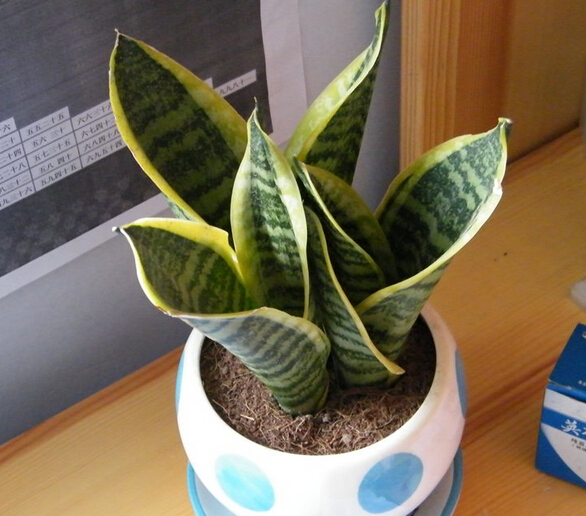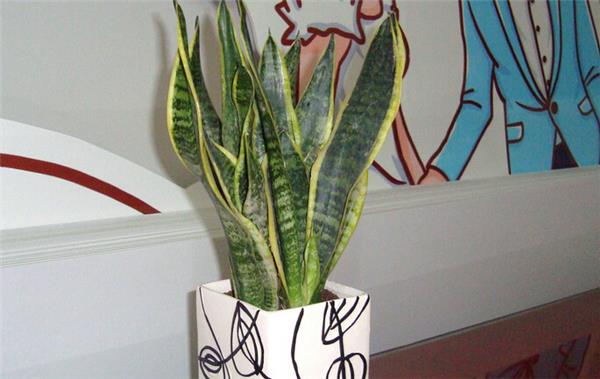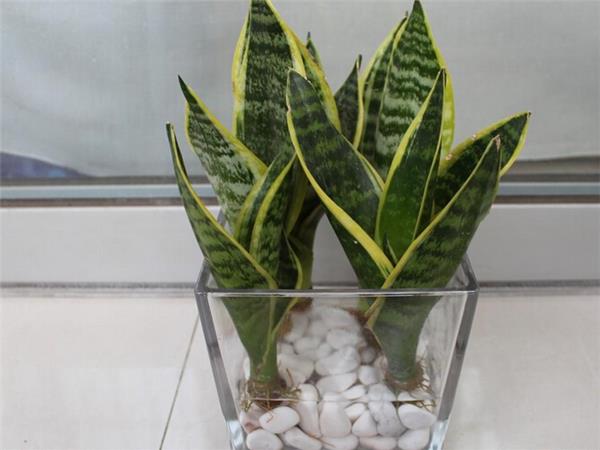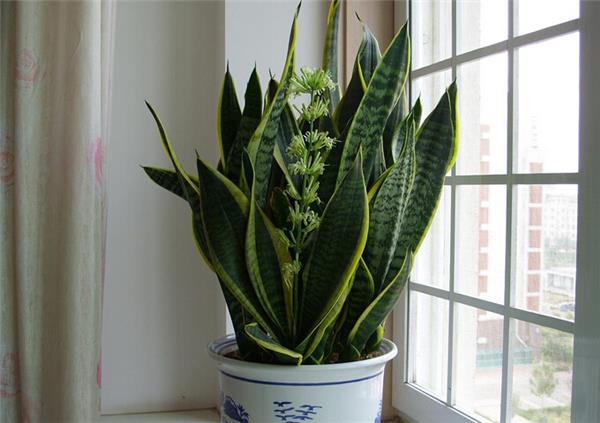Easy cultivation of Phnom Penh tiger tail orchid in a few simple steps
Phnom Penh is a perennial herb, which is distributed in both tropics and subtropics. Phnom Penh tiger tail orchid leaves are firm and upright, with gray-white and dark green tiger-tail stripes, resolute posture, strange and interesting. Phnom Penh tiger tail orchid plant shape and leaf color changes greatly, exquisite and unique, especially suitable for decorating study, living room, office space, for people to appreciate for a long time. In addition, it is said that Phnom Penh tiger tail orchid can also absorb formaldehyde and other harmful gases, more popular with people. So, what is the breeding method of Phnom Penh tiger tail orchid?

Culture method of Phnom Penh tiger tail orchid
☆-- 1. Reproduction. The propagation methods of Phnom Penh tiger tail orchid are mainly split-plant propagation and cuttings, which can separate the new and old plants, and the old plants can be transplanted to other pots or planted in the ground. To breed, the leaves are first cut into fragments of 7mur8 cm long, then inserted into the prepared substrate. Pay attention to the spraying of medicine and water. 20 Mel can take root after 30 days.
☆-- 2, temperature. Phnom Penh tiger tail orchid grows best at 20Mel 25 ℃, but it can be planted indoors all the year round, and it can be moved outside when the weather is warm, and the growth will be better. From late autumn to early winter, it should be placed indoors when it is cold, preferably above 10 ℃, and watering should be controlled. Watering can be stopped if the room temperature is less than 5 ℃, and watering at low temperature can easily cause the death of Phnom Penh tiger tail orchid.
☆-- 3. Watering. The cultivation of Phnom Penh tiger tail orchid should be watered more in high temperature season to keep the basin soil moist at any time. Phnom Penh tiger tail orchid bogey strong light, summer should also be properly shaded; less watering in winter to keep the basin soil dry and placed in the sun. When growing in plastic pots or porcelain pots, you should water less, rather dry than wet, if stagnant water will lead to the death of the rotten roots of Phnom Penh. Phnom Penh tiger tail orchid growth period to pay attention to keep the leaf clean, can be used to spray water to wash, but also can keep moist.

☆-- 4. Fertilization. Phnom Penh tiger tail orchid fertilizer requirements are not high, can be used in the spring when a rotten cake fertilizer, such as sesame oil cake, bean cake and so on. Phnom Penh tiger tail orchid only needs to apply dilute liquid fertilizer twice a month during the growing season to ensure its green and thick leaves. Phnom Penh tiger tail orchid enters the dormant period in winter to stop fertilizing.
☆-5. Soil planting. Potted Phnom Penh tiger tail orchid had better be planted in a mud basin, which can be covered with a plastic basin or porcelain basin, ventilated and beautiful in appearance. Phnom Penh Huwei Orchid prefers loose, well-drained soil, which can be evenly mixed with rotten leaf soil, loam or pastoral soil and the same amount of coarse sand, plus a little rotten barnyard manure.
☆-6. Pest control. The main diseases and insect pests of Phnom Penh tiger tail orchid are shell insect, rot disease and sunburn disease. Scale insects can harm the leaves of the plant and cause its necrosis, so we should pay attention to timely prevention and control so as to avoid the death of the plant. If rot occurs, the spray should be changed and the liquid should be sprayed in time. When sunburn is found, ventilation or water diversion should be strengthened to cool down and shade properly in high temperature season.

☆-- 7, matching planting. Planting Phnom Penh tiger tail orchid can plant some plants around, but the characteristics of planting plants should be basically similar to those of Phnom Penh tiger tail orchid, so it is easy to manage, and the whole pot is more suitable for each other. Matching planting can give full play to creativity, which can not only effectively improve the ornamental value, but also improve the interest of planting.
Tiger tail orchid likes warm temperatures. It needs plenty of sunshine and can tolerate shade moderately. The suitable temperature is 18 to 27 degrees, and growth stops when it is below 13 degrees. Winter is the dormant period, in the well-drained sand, the environment with a temperature of no less than 0 degrees can survive. What is the function of such a strong tiger tail orchid?
The function of Phnom Penh Tiger tail Orchid
☆-1. Beautify the home environment
Phnom Penh tiger tail orchid has the role of beautifying and embellishing the home environment, although tiger tail orchid has no colorful flowers, no floral figure, in fact, it has a tender and strong character, and chic patterns on the body. It has become a relatively special kind of many plants used to embellishment has a quite good effect, a pot of vibrant tiger tail orchid decorated in the corner of the home, add a lot of color.

☆-2. Purify formaldehyde
Phnom Penh tiger tail orchid is a perennial herbaceous foliage plant, with heavy roots, linear lanceolate, strong adaptability, lax requirements on the living environment, very suitable for decorating living room, study and other places, in addition to providing viewing, the biggest feature is that it can purify the air. According to experts, tiger orchid can absorb more than 80% of indoor harmful gases, especially for formaldehyde, in newly renovated houses or after the purchase of furniture. The effect is particularly obvious, and Hu Pilan can also prevent radiation and reduce the damage of toxic gases, radiation and so on to the family.
Cymbidium is a perennial herb of the false Leaf Family, also known as Orchid and Cymbidium. It is a plant of the genus Orchidaceae, with varieties of Phnom Penh and Silver vein. Originated in western and southern Africa, because of its high ornamental value, it is now used as an ornamental bonsai, which is common in flower and bird markets and families all over the world. What is the classification of Tiger tail Orchid?
Variety classification of tiger tail orchid
☆-1, Phnom Penh Tiger tail Orchid. Phnom Penh tiger tail orchid alias yellow edge tiger tail orchid. It is a cultivated variety of Cymbidium. The leaf edge has yellow banded fine stripes, the middle is light green, and there are dark green transverse stripes. It has higher ornamental value than tiger tail orchid.

☆-2, Phnom Penh short-leaf tiger tail orchid. Phnom Penh short-leaf tiger tail orchid alias yellow short-leaf tiger tail orchid. It is a variety of short-leaf tiger tail orchid. Except for the wide yellow band on the leaf margin, which accounts for about half of the leaves, the other characteristics are similar to those of the short-leaf tiger tail orchid. Leaves short, broadly oblong, lotus-shaped. The ornamental value is higher.
☆-- 3. Short-leaf tiger tail orchid. Short-leaf tiger tail orchid is a cultivated variety of tiger tail orchid. The plant is low and the plant height is not more than 20 cm. The leaves rotate outward from the center and overlap each other to form a bird's nest. The leaf is short and wide, long ovate, leaf tip acuminate, with obvious short tail tip, leaf length 10-15 cm, width 15-22 m, leaf color dark green, leaf edge on both sides of a wide yellow band, leaf surface with irregular silver-gray stripes. Leaves fascicled, luxuriant.

The above is the introduction of the breeding methods of Phnom Penh tiger tail orchid and the role of tiger tail orchid introduced by Xiaobian. I hope you can get a better understanding of Phnom Penh tiger tail orchid through this article.
According to experts, tiger skin orchid can absorb more than 80% of indoor harmful gases, especially for formaldehyde, especially in newly renovated houses or after newly purchased furniture, and tiger skin orchid can also prevent radiation and reduce the harm of toxic gases, radiation and so on to the family.
Cymbidium is a perennial herb of the false Leaf Family, also known as Orchid and Cymbidium. It is a plant of the genus Orchidaceae, with varieties of Phnom Penh and Silver vein. Originated in western and southern Africa, because of its high ornamental value, it is now used as an ornamental bonsai, which is common in flower and bird markets and families all over the world. What is the classification of Tiger tail Orchid?
Variety classification of tiger tail orchid
☆-1, Phnom Penh Tiger tail Orchid. Phnom Penh tiger tail orchid alias yellow edge tiger tail orchid. It is a cultivated variety of Cymbidium. The leaf edge has yellow banded fine stripes, the middle is light green, and there are dark green transverse stripes. It has higher ornamental value than tiger tail orchid.

☆-2, Phnom Penh short-leaf tiger tail orchid. Phnom Penh short-leaf tiger tail orchid alias yellow short-leaf tiger tail orchid. It is a variety of short-leaf tiger tail orchid. Except for the wide yellow band on the leaf margin, which accounts for about half of the leaves, the other characteristics are similar to those of the short-leaf tiger tail orchid. Leaves short, broadly oblong, lotus-shaped. The ornamental value is higher.
☆-- 3. Short-leaf tiger tail orchid. Short-leaf tiger tail orchid is a cultivated variety of tiger tail orchid. The plant is low and the plant height is not more than 20 cm. The leaves rotate outward from the center and overlap each other to form a bird's nest. The leaf is short and wide, long ovate, leaf tip acuminate, with obvious short tail tip, leaf length 10-15 cm, width 15-22 m, leaf color dark green, leaf edge on both sides of a wide yellow band, leaf surface with irregular silver-gray stripes. Leaves fascicled, luxuriant.

The above is the introduction of the breeding methods of Phnom Penh tiger tail orchid and the role of tiger tail orchid introduced by Xiaobian. I hope you can get a better understanding of Phnom Penh tiger tail orchid through this article.
- Prev

How can the role of evergreen maximize the role of evergreen
How can the role of evergreen maximize the role of evergreen
- Next

What about the yellowing of Anthurium andraeanum leaves? how to easily fix the yellowing of Anthurium andraeanum leaves?
What about the yellowing of Anthurium andraeanum leaves? how to easily fix the yellowing of Anthurium andraeanum leaves?
Related
- Wuhan Hospital Iron Tree Blooming Result Was Instantly Frightened by the Gardener Master
- Which variety of camellia is the most fragrant and best? Which one do you like best?
- What is the small blue coat, the breeding methods and matters needing attention of the succulent plant
- Dormancy time and maintenance management of succulent plants during dormancy
- Minas succulent how to raise, Minas succulent plant pictures
- What are the varieties of winter succulent plants
- How to raise succulent plants in twelve rolls? let's take a look at some experience of breeding twelve rolls.
- Attention should be paid to water control for succulent plants during dormant period (winter and summer)
- Watering experience of twelve rolls of succulent plants
- Techniques for fertilizing succulent plants. An article will let you know how to fertilize succulent plants.

